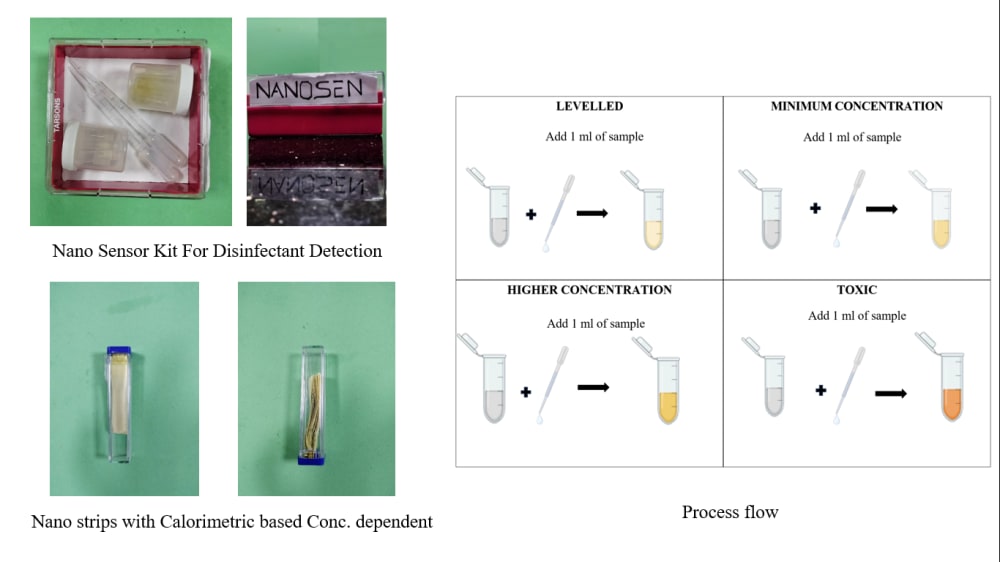
Sodium hypochlorite (NaOCl) is widely used as a disinfectant in water treatment, but its potential health risks due to disinfection by-product (DBP) formation necessitate accurate and timely monitoring. Existing detection methods are often time-consuming and require laboratory analysis, limiting their practical application. Here, we propose the development of a high-sensitivity nano sensor for real-time NaOCl detection in water. This nano sensor will leverage the unique properties of nanomaterials to achieve high sensitivity, allowing for detection of NaOCl at parts per billion (ppb) levels. The sensor will be designed to be portable and user-friendly, enabling on-site monitoring and rapid assessment of NaOCl concentrations. The successful development of this nano sensor will significantly enhance water quality monitoring and ensure safe drinking water for public health protection.
The developed technique involves the interaction of functionalized nanoparticles with water samples that are assumed to be bleachments, altering their magnetic properties upon binding. A magnetic field is used to extract these nanoparticles from the aqueous matrix, and a specialized detecting technique is used to quantify the concentration of these nanoparticles or any changes in their magnetic characteristics. This novel technique offers a strong tool for quality control in the food business and shows potential for improving the safety and integrity of water quality enhancement.
This project successfully developed a nano sensor for real-time monitoring of sodium hypochlorite (NaOCl) levels in water. The nano sensor addressed the limitations of existing methods by achieving the following OUTCOMES:
- High sensitivity: The nano sensor demonstrated exceptional sensitivity, accurately detecting NaOCl at extremely low concentrations exceeding the capabilities of traditional techniques.
- Portability: The nano sensor was miniaturized and integrated into a portable device, facilitating on-site detection and analysis. This eliminated the need for sample transportation and laboratory analysis, simplifying the monitoring process.
- Selectivity: The nano sensor was designed to selectively detect NaOCl without interference from other compounds present in water. This ensured accurate and reliable measurements, minimizing potential errors in data interpretation.
- Cost-effectiveness: The nano sensor was fabricated using relatively inexpensive materials and techniques, making it a cost-effective
Video
-
Awards
-
 2024 Top 100 Entries
2024 Top 100 Entries
Like this entry?
-
About the Entrant
- Name:Eswara G R
- Type of entry:teamTeam members:
- VISHWA ARJUN J S
- Patent status:pending

